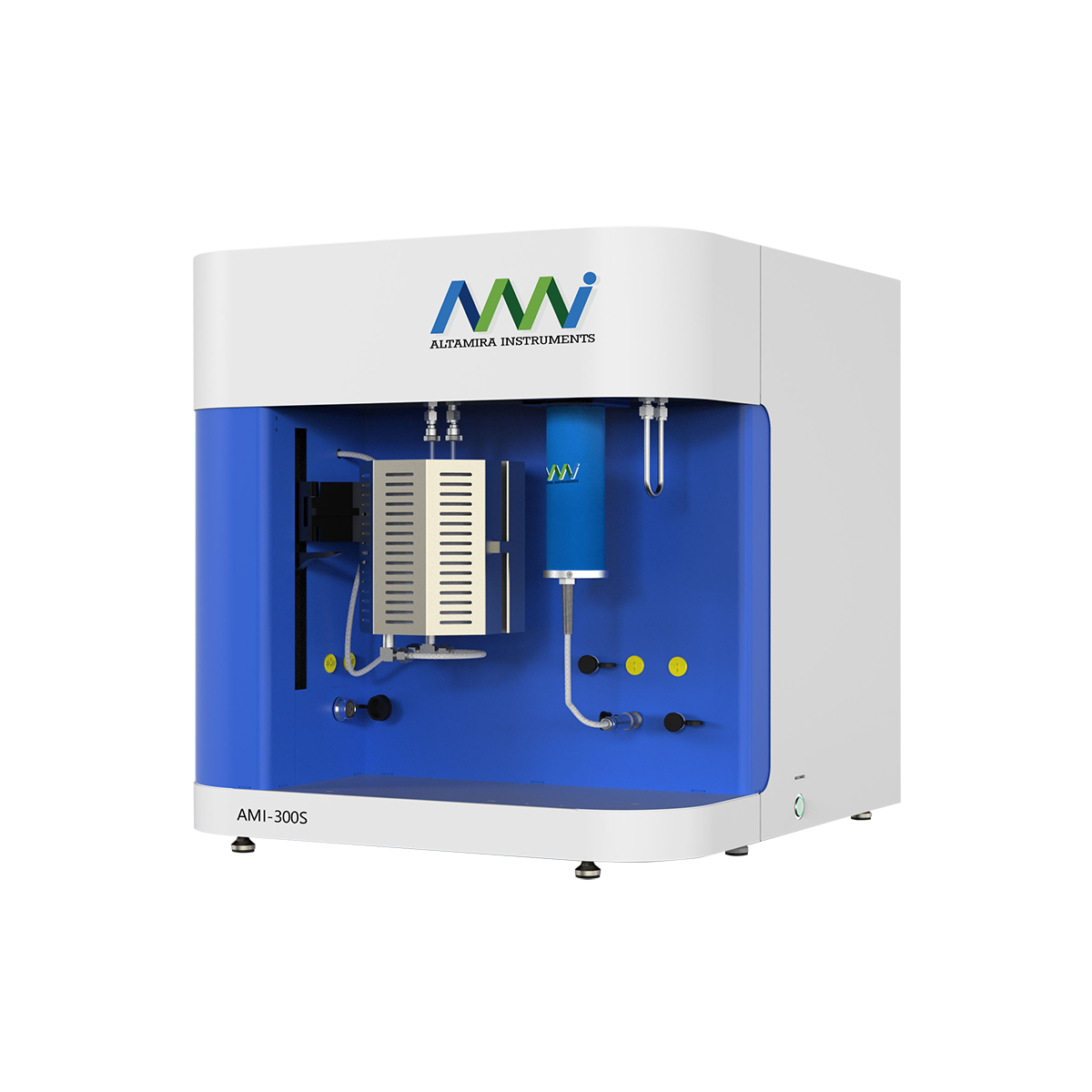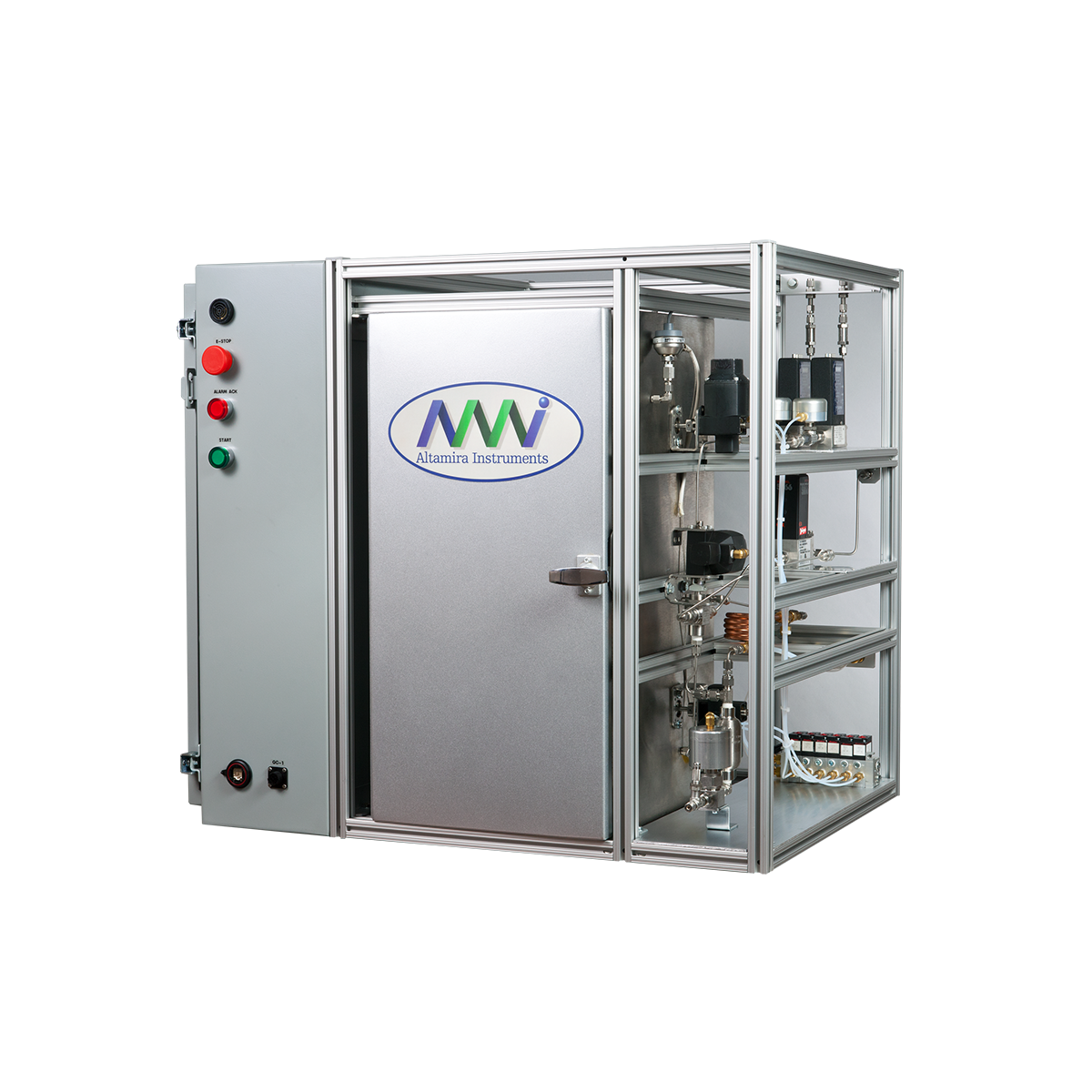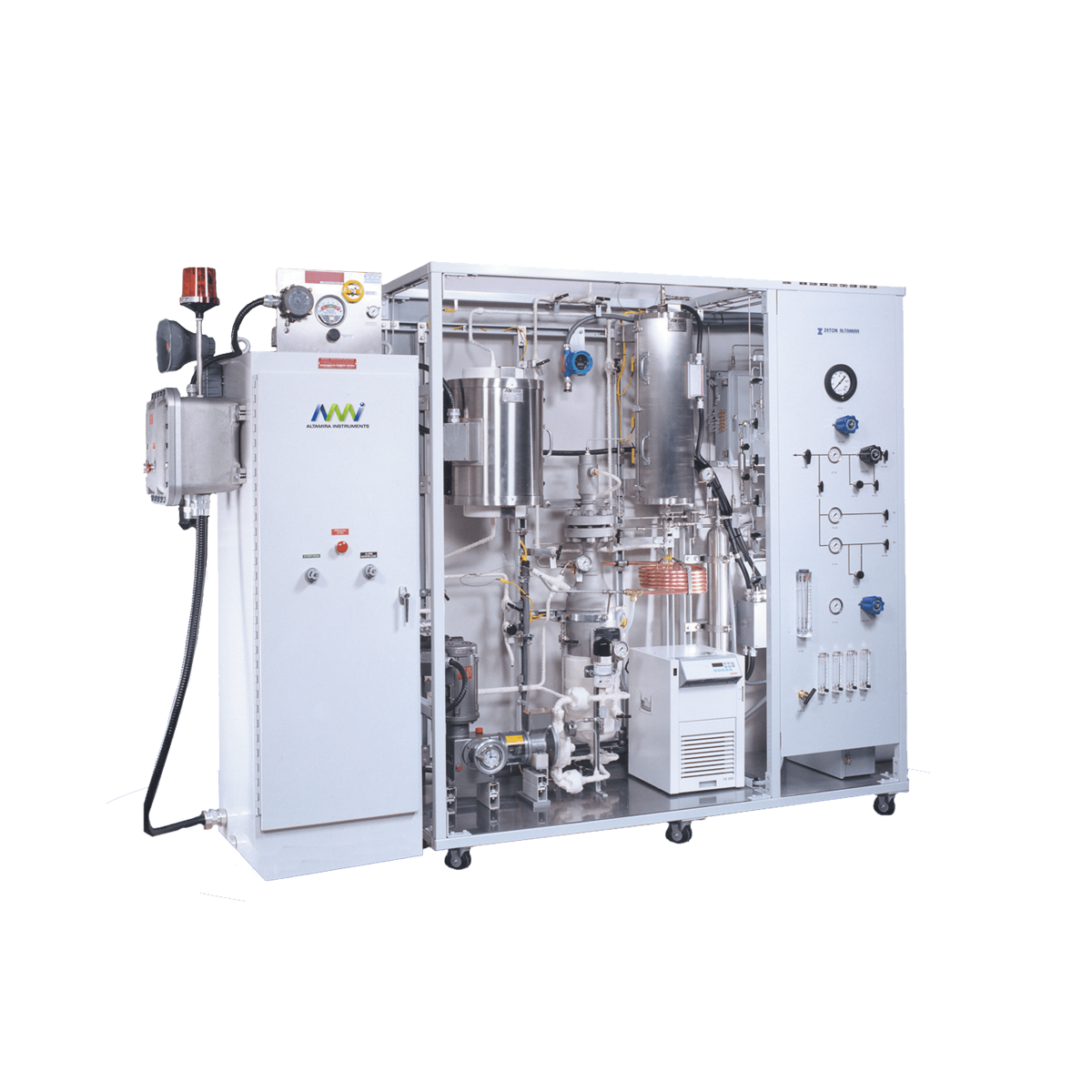CATALYST EVALUATION
A common use of catalytic reactors in the research laboratory is for the evaluation or "screening" of catalysts. Often this involves testing tens or hundreds of catalysts with very similar formulations and simply comparing their activity and/or selectivities towards a particular reaction. For such cases it is only necessary that the information obtained represent true trends in the behavior of these catalysts and fairly simple laboratory reactors may be suitable.
For these types of studies, small fixed-bed reactors are typically chosen. Fixed-bed reactors are simple to fabricate, can be satisfactorily operated with only a small amount of catalyst (an important criterion if one is synthesizing only laboratory quantities of catalyst), and with proper choice of operating conditions can be run isothermally and with a minimum of transport effects. These fixed-bed reactors can be operated in either a differential or integral mode. However, for meaningful comparisons among catalysts, the overall conversion should be kept low so that differences in catalytic activity become readily apparent.
Pulse-type fixed-bed reactors, in which the reactants are periodically pulsed over a catalyst bed otherwise maintained in an inert gas flow, can also be used for quick screening of catalysts. However, since data obtained from these reactors is not obtained under steady-state conditions, one must be careful when comparing activity or selectivity information from catalysts which are at different pulse frequencies.
DETERMINATION OF INTRINSIC KINETIC DATA
When choosing a laboratory-scale catalytic reactor to obtain intrinsic kinetic data, one is concerned with operating with minimal heat and mass gradients so that the information obtained accurately reflects the true chemistry of the reaction and that it is not affected by transport effects. Thus one would like to use a reactor type which has a well-defined analytical solution to their kinetic equations. As detailed in a previous Altamira Note, three such reactor types exist, namely batch, CSTR, and plug-flow. These should be ideally operated in an isothermal mode and experimental tests for both heat and mass transfer limitations should be carried out to ensure that the results obtained are indeed due to the intrinsic kinetics of the reaction.
Of the ideal reactor types, perhaps the most commonly used is the CSTR. A CSTR is a perfectly mixed flow reactor and is characterized by the reacting mixture having the same composition as the exit stream. The CSTR can take many forms, including impeller-mixed vessels, externally recirculating systems using pumps, and internally recirculating vessels, such as the Berty or Carberry reactors.
DETERMINATION OF PROCESS PARAMETERS FOR SCALE-UP
In addition to obtaining intrinsic kinetic data, it is sometimes necessary to operate a reactor so as to mimic as close as possible the behavior of a large-scale reactor. In these cases one is concerned with designing a reactor having a distribution of phases which approximate those in the large-scale reactor of interest and has dimensions and parameters which correspond to the size of the large-scale reactor. Thus, the type of laboratory reactor used should be of the same type as the large reactor. Additionally, it should be operated under conditions of temperature, pressure, reactant concentrations, and catalyst shape which are substantially the same as will be used in the larger reactor.
SUMMARY
Table 1 summarizes several common reactor types and some of their important characteristics. Laboratory reactors can come in a variety of sizes and types and the best choice of reactor will depend on the objectives which one desires to meet.
REFERENCES
General References
0. Levenspiel, "Chemical Reactor Engineering", John Wiley & Sons, N.Y., (1972).
J.J. Carberry, "Chemical and Catalytic Reactor Engineering", McGraw-Hill, N.Y. (1976).
H.F. Rase, "Chemical Reactor Design for Process Plants. Volume One: Principles and Techniques", John Wiley & Sons, N.Y. (1977).
J.C.R. Turner, An Introduction to the Theory of Catalytic Reactors, in "Catalysis Science and Technology" (J.R. Anderson and M. Boudart, eds.), Springer-Verlag, N.Y. (1981).
Fixed-Bed Reactors
H.F. Rase, "Fixed-Bed Reactor Design and Diagnostics", Butterworths, Boston (1990).
REFERENCES (Cont.)
Recycle Reactors
J.J. Carberry, Ind. Eng. Chem., 56, 39 (1964).
D.G. Tajbl, J.B. Simons, and J.J. Carberry, I&EC Fundamentals, 5, 171 (1966)
J.M. Berty. Chem. Eng. Prog., 70, 78 (1974)
C.O. Bennett, M.B. Cutlip. and C.C. Yang, Chem. Eng. Sci.. 27, 2255 (1972)
Comparisons
V.W. Weekman, AlChE J.,20. 833 (1974).




